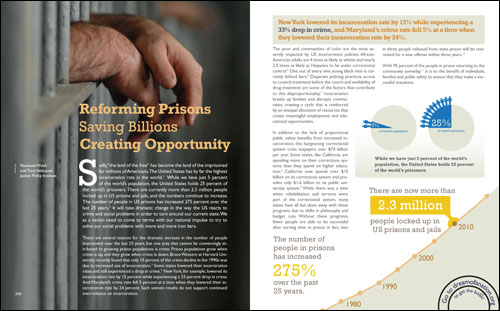Rethinking the Prison System
When an individual criminal is imprisoned, we tend to think of it as performing a social good. But when we lead the world in incarceration – the U.S. holds 25 percent of the world’s prisoners despite having just 5 percent of its population – it’s time to reconsider whether mass incarceration is truly serving our communities. Statistics already challenge this assumption. For example, New York lowered its incarceration rate 15 percent while also dropping crime 33 percent. Locking an individual up is expensive, and that money can be better spent on or preventative measures like improved education, safety nets, and job training.
 Reducing Incarceration, Rebuilding Communities
Reducing Incarceration, Rebuilding CommunitiesJustice Policy Institute is a national nonprofit organization that changes the conversation around justice reform to promote well-being and justice for all people and communities. Their research and analyses identify effective programs and policies and disseminates those findings to policymakers and the media. Read more.
JPI the Justice Policy Institute essay: "Reforming Prisions, Saving Billions, Creating Opportunity"

Endnotes & References